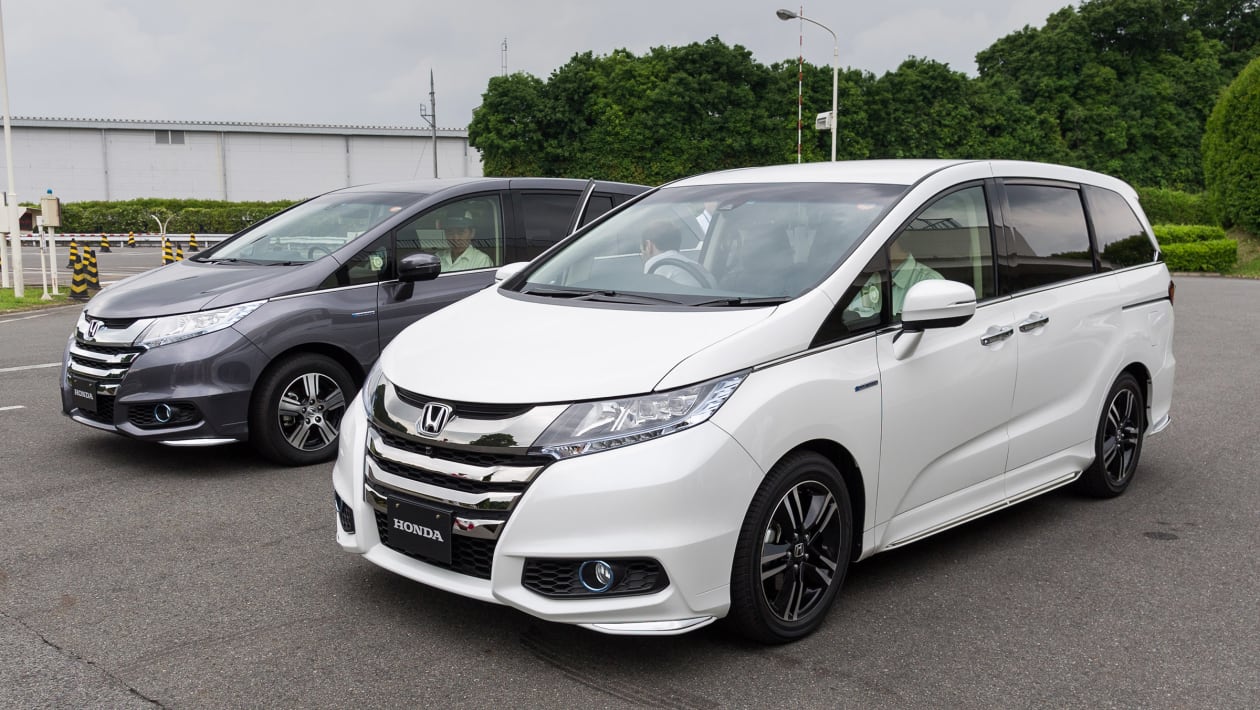Wieso Nein? Was genau ist falsch in meiner Beschreibung?
SHIGERU Lass es dir vom Entwicklungsingenieur von HONDA erklären:
Wenn du dann immer noch bei deiner Darstellung bleibst - woher hast du diese Fehlinformationen (Quelle?)
- EV Drive: the lithium-ion battery supplies power to the electric propulsion motor directly.
- Hybrid Drive: the engine supplies power to the electric generator motor, which in turn supplies it to the electric propulsion motor.
- Engine Drive: the petrol engine is connected directly to the wheels via a lock-up clutch and driveforce is transmitted directly from engine to the wheels. In most urban driving situations, optimum efficiency is achieved through seamless transitions between EV Drive and Hybrid Drive. For driving at highway speeds, Engine Drive is used, supplemented by an on-demand peak power ‘boost’ from the electric propulsion motor for fast acceleration.
In Hybrid Drive, excess power from the petrol engine can also be diverted to recharge the battery via the generator motor. EV Drive is also engaged when the car is decelerating, harvesting energy through regenerative braking to recharge the battery.
Switching between the three driving modes is unnoticeable to occupants; Jazz engineers dedicated significant efforts to minimising lag during transitions. The high-speed electric motors have been developed in-house by Honda to be as lightweight, compact and efficient as possible, the electric propulsion motor spins up to 13,300 rpm to achieve a maximum speed of 175 km/h. The maximum torque is generated at 0 rpm for substantial low-speed acceleration.
Rather than using a conventional transmission, Jazz is equipped with a newly-developed Electronically Controlled Continuously Variable Transmission (e-CVT) with a single fixed-gear ratio to create a direct connection between moving components. The result is a smooth and reassuring transfer of torque with a linear feel during acceleration across all drive modes.
When in Hybrid Drive mode the all-new e-CVT control logic ensures that the electric propulsion motor provides powerful torque, whilst the engine provides a direct and linear feel during acceleration, similar to that of a multi-stage transmission. When more power is required, the new control logic can constantly select the ideal engine speed. This has the impact of maintaining a relationship between vehicle speed and engine speed and a more linear feeling, experienced by the driver and passengers as acceleration sound. This optimised torque output, with more responsive and consistent delivery, is a key component of the fun-to-drive character of Jazz.
As well as being more refined, the e-CVT developed for Jazz is more compact than the conventional planetary e-CVT units typically found in hybrid vehicles from other marques. With a focus on dimensions and clever integration, the new e-CVT is an example of the intelligent packaging evident elsewhere on Jazz.
Und ja - ich bin den HR-V probegefahren.
Die entscheidende Passage lautet hier: Hybrid Drive/Mode bedeutet, dass der Verbrenner über den Generator Strom für den elektrischen Antriebsmotor liefert. Und, wie in der Grafik zu sehen, fährt der HR-V über 120 km/h im Hybrid Drive/Mode, wird also NICHT vom Verbrenner angetrieben, weil, wie ich schon ausgeführt habe, das Übersetzungsverhältnis des Direktantriebs dann ungünstig ist. Für die Höchstgeschwindigkeit ist die max. Drehzahl des Elektromotors die relevante Größe (beim Jazz 13.300 rpm), NICHT die Leistung des Verbrenners. Der Engine Mode/Drive, also Direktantrieb durch den Verbrenner, ist NUR zwischen 80 und 120 km/h aktiv, und bei geringer Last auch unter 80 km/h. Aber nicht über 120 km/h. Ich kann dir auch Quellen finden, dass das nicht nur für den Jazz, sondern auch für den HR-V gilt. Sagt HONDA. Aber glaube, was du glauben willst....


